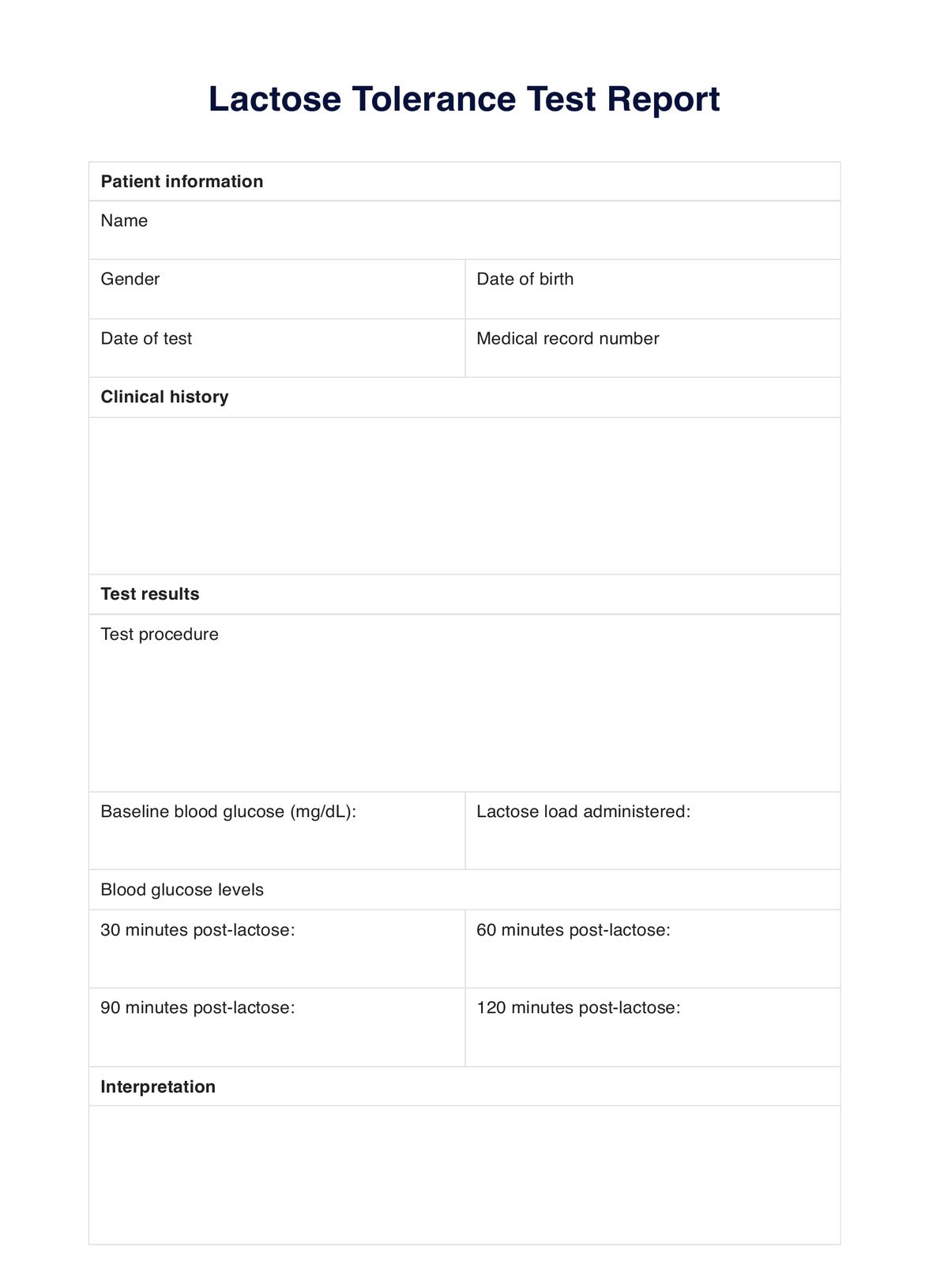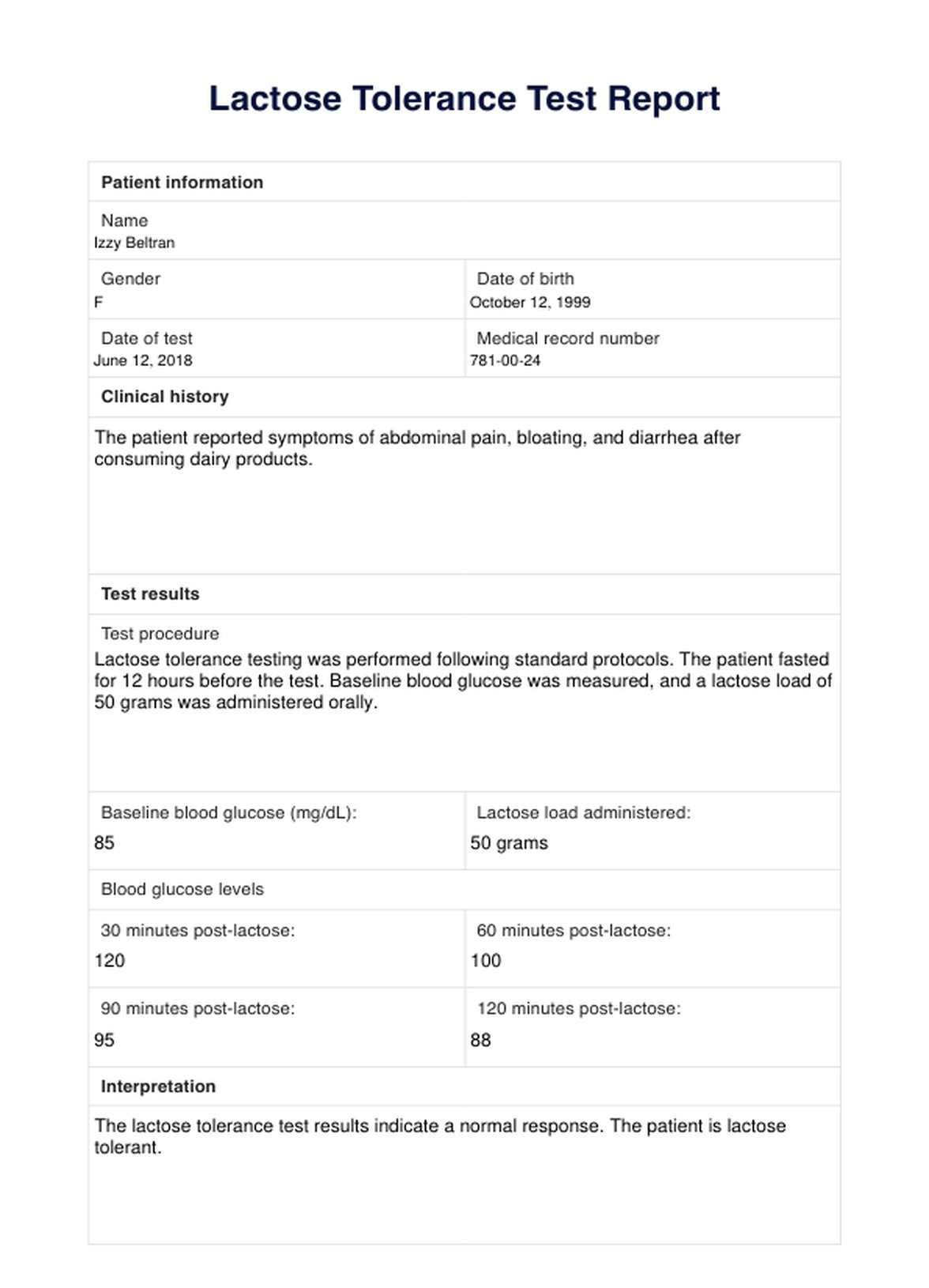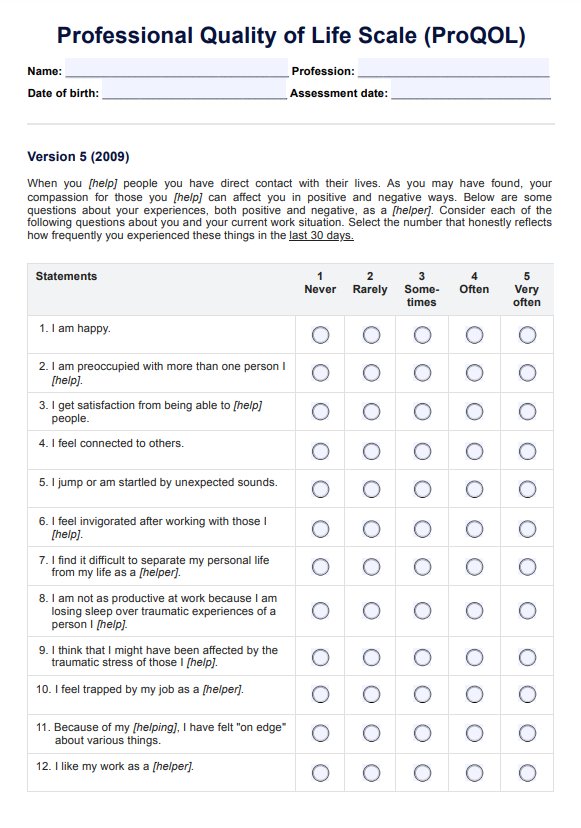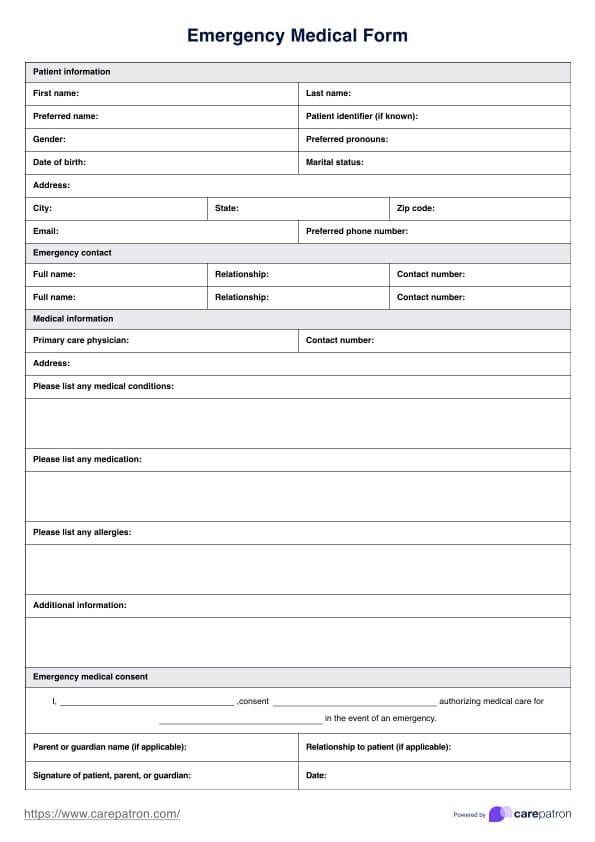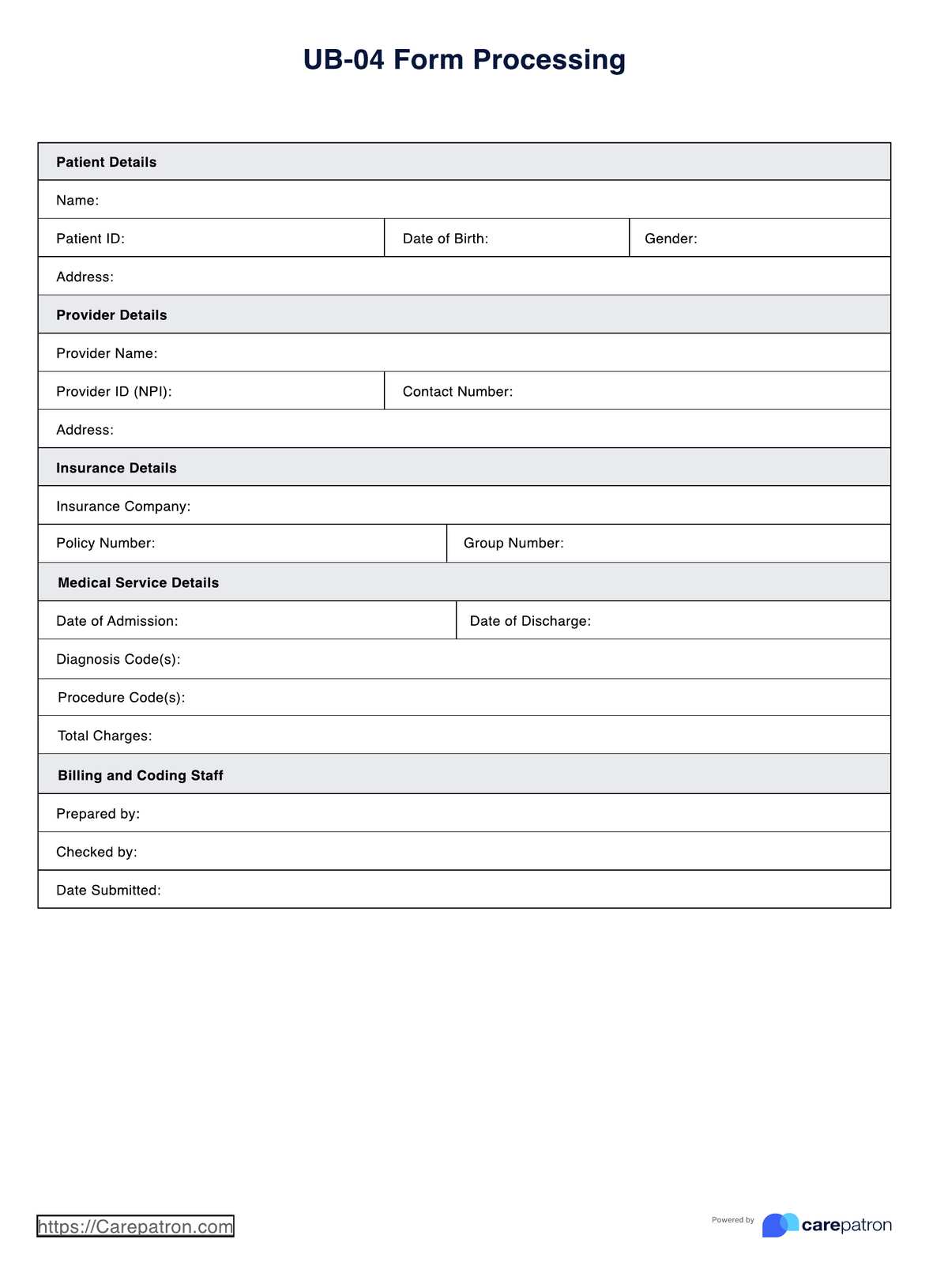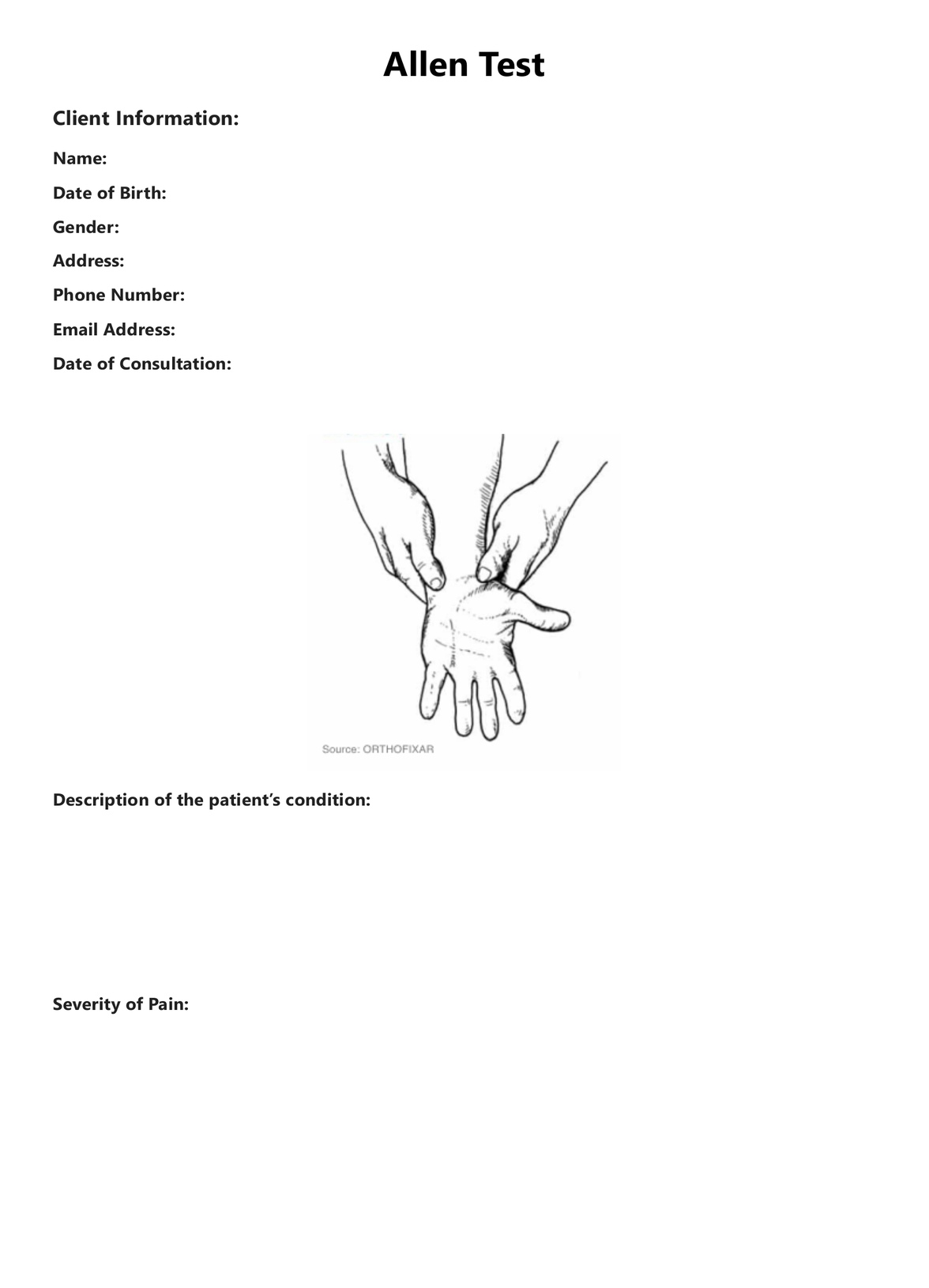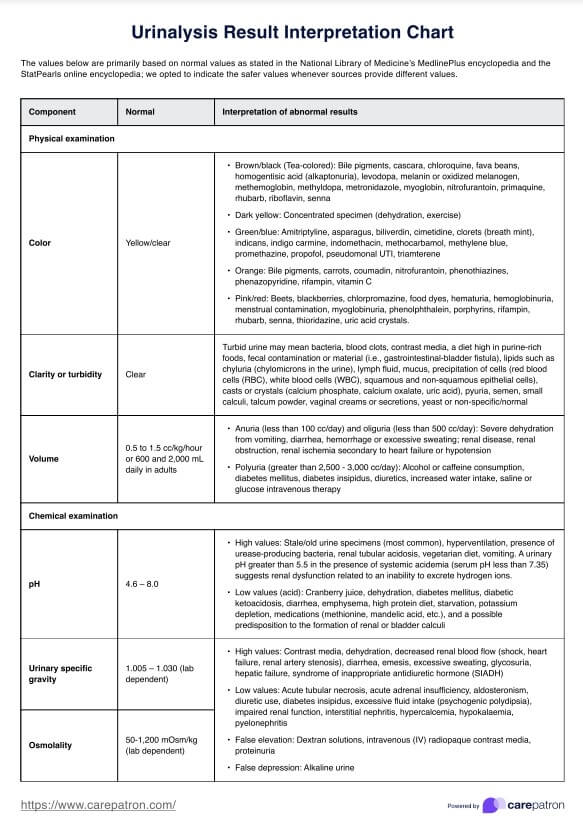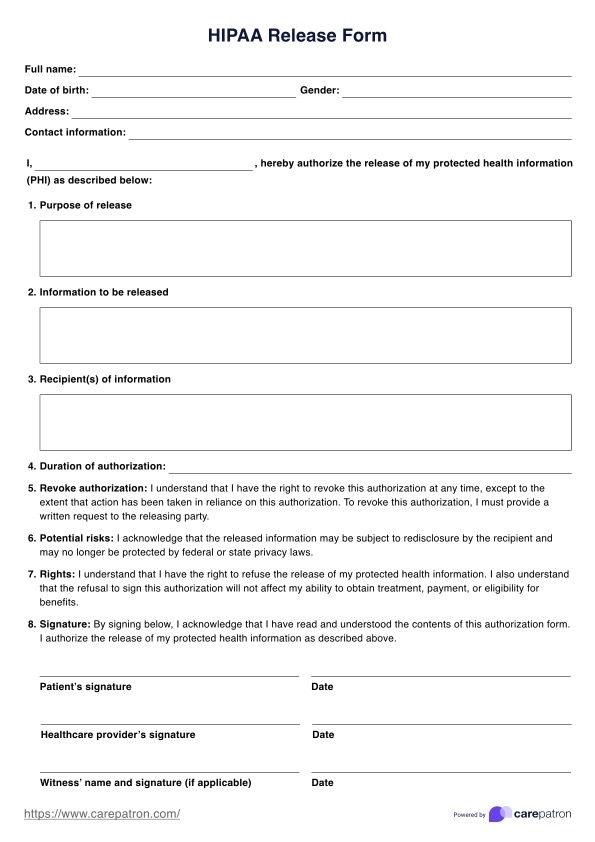Lactose Tolerance Test Reports
Learn about the Lactose Tolerance Test, its purpose, and procedure, and get an example of the test results in this guide. Download a free PDF template here.


What is a Lactose Tolerance Test?
Lactose tolerance is the body's ability to digest lactose, a sugar in milk and dairy products. Individuals with lactose tolerance have enough lactase, an enzyme in the small intestine, to break down all the lactose they consume. On the other hand, those with lactose intolerance do not produce enough lactase, leading to digestive discomfort when they consume dairy products.
A Lactose Tolerance Test is a simple procedure used to detect intolerance to lactose. The patient drinks a liquid containing a known amount of lactose. Then, blood samples are taken over two hours to measure the amount of glucose in the bloodstream. If the lactose has been properly digested, glucose levels in the blood will rise.
However, if the individual is lactose intolerant, the glucose level in the blood does not rise since the lactose is not properly broken down. This test is typically conducted in a healthcare setting under the supervision of a medical professional.
In a Lactose Tolerance Test Report, the results are interpreted based on the glucose level in each blood sample. A normal result would show a steady increase in glucose levels over time, indicating that the lactose has been adequately digested. On the other hand, an abnormal result would show little or no increase in glucose levels, indicating lactose intolerance.
This test is often recommended for individuals who experience digestive discomfort after consuming dairy products. It can also diagnose lactose intolerance in infants and children who cannot communicate their symptoms.
Lactose Tolerance Test Reports Template
Lactose Tolerance Test Reports Example
How Does it Work?
Carepatron's free Lactose Tolerance Test Report template lets you easily document your patients’ results. The template includes sections to record patient information, test results, and recommendations. Here's how to use the template:
Step One: Download the template.
Get a copy of the printable Lactose Tolerance Test Report using the link on this page. You can also find it on the Carepatron app or our telehealth software's resources library.
Step Two: Fill in patient information.
Record the patient's name, date of birth, and any known allergies or medical conditions. This will help to ensure accurate results and recommendations.
Step Three: Record test details.
Document the results of the Lactose Tolerance Test, including the time and date of the test, as well as the glucose levels at each interval. This will clearly show how well the patient's body can digest lactose.
Step Four: Interpret results.
Compare the glucose levels against the normal range and determine if they indicate a normal or abnormal result. Include any notes or observations relevant to the patient's condition.
Step Five: Provide recommendations.
Based on the test results, provide recommendations for the patient. This could include dietary changes, additional testing, or follow-up appointments with a healthcare provider.
When Would you use This Test Report?
You can use the Lactose Tolerance Test Report template to document and communicate the results of a patient's Lactose Tolerance Test. This test is typically ordered for individuals who experience bloating, gas, diarrhea, or abdominal pain after consuming dairy products. Alternatively, you may use the template to do the following:
Monitor the progress of a patient's lactose intolerance over time
Our Lactose Tolerance Test Report is a great starting point for tracking and documenting a patient's lactose intolerance. You can use it to compare test results from different periods to determine if there have been any changes in the patient's ability to digest lactose.
Support further medical investigations
If the patient's test results show an abnormal result, you may need to conduct additional tests or refer them to a specialist for further evaluation. In this case, our Lactose Tolerance Test Report can be a valuable record to share with other healthcare providers involved in the patient's care.
Educate your patients about lactose intolerance
You can use this template to explain to your patients what lactose intolerance is, the importance of the test, and how to interpret their results. By understanding their condition, patients may feel more empowered to manage their symptoms and make appropriate dietary choices.
Streamline your clinical documentation process
The Lactose Tolerance Test Report template is designed to streamline the process of documenting and communicating patient test results. Its clear, straightforward format makes it easy to fill out and understand, saving valuable time for you and your patients. You can also easily save the document in your patient's electronic health records for future reference and updates.
What do the Results Mean?
The results of a Lactose Tolerance Test can provide valuable information about a patient's ability to digest lactose. The test measures glucose levels in the blood after consuming a lactose solution. If the patient's body cannot break down the lactose, their glucose levels will remain low.
Normal results
A normal result indicates that the patient's body can digest lactose efficiently. This means they have enough of the enzyme lactase, which breaks down lactose, in their small intestine. However, it is possible for a person with a normal result to still experience some discomfort or symptoms after consuming dairy products.
Abnormal results
If the patient's glucose levels do not rise after consuming the lactose solution, this indicates an abnormal result. It could mean that the patient is lactose intolerant or has a condition such as small intestinal bacterial overgrowth (SIBO) or celiac disease that affects lactose digestion.
It's essential to explain the meaning of the test results to your patient clearly and understandably. Discussing potential causes and treatment options is necessary if they have an abnormal result. This can help them make informed decisions about their diet and overall health.
Commonly asked questions
Primary care doctors, gastroenterologists, and dietitians may ask for a Lactose Tolerance Test for patients experiencing symptoms after consuming dairy products or those with a family history of lactose intolerance.
Lactose Tolerance Tests are used when a patient is experiencing symptoms such as bloating, gas, or diarrhea after consuming dairy products. It may also be recommended for those with a family history of lactose intolerance or if there is suspicion of other conditions affecting lactose digestion.
The test may take anywhere from 2 to 5 hours, depending on the protocol used by the healthcare provider. This includes fasting time, drinking the lactose solution, and measuring glucose levels regularly.


